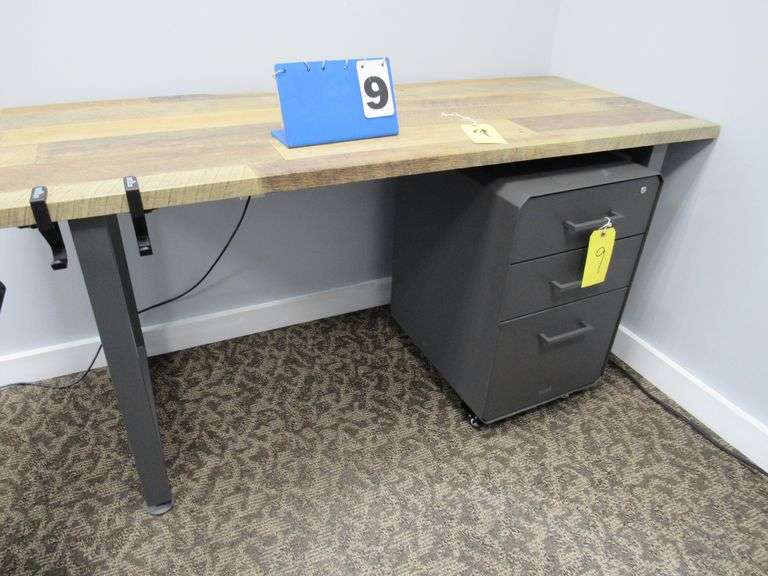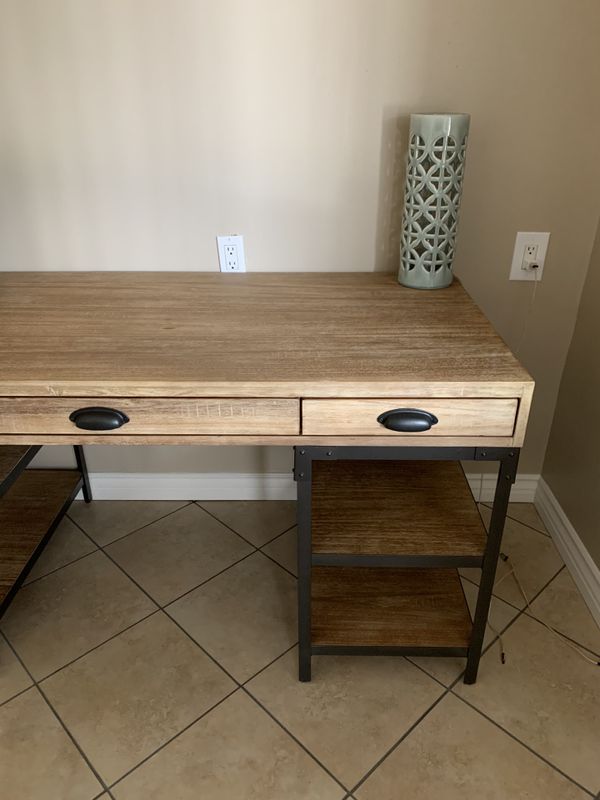Cheap Pickup Trucks For Sale Under $1000: Your Guide to Budget Utility pickup.truckstrend.com
For many, the idea of owning a pickup truck conjures images of rugged capability, hauling power, and weekend adventures. However, the price tag associated with new or even late-model used trucks can be a significant barrier. This is where the fascinating, often challenging, but ultimately rewarding world of "cheap pickup trucks for sale under $1000" comes into play. This guide delves deep into this niche market, offering practical advice, realistic expectations, and actionable insights for anyone brave enough to seek out a true bargain.
What Does "Under $1000" Really Mean?
Cheap Pickup Trucks For Sale Under $1000: Your Guide to Budget Utility
Let’s be clear from the outset: a pickup truck available for less than a grand is not going to be a pristine, turn-key vehicle ready for cross-country road trips. For under $1000, you are entering the realm of project vehicles, farm trucks, parts haulers, or perhaps a temporary solution for a very specific need. These are trucks that have seen better days – many, many better days. They often come with high mileage, visible wear and tear, and a list of mechanical or cosmetic issues.
The importance and relevance of this market lie in its accessibility. For individuals with limited budgets, aspiring mechanics looking for a learning project, small businesses needing a basic utility vehicle, or property owners needing a designated "farm truck" that can take a beating, these ultra-affordable pickups represent an unparalleled opportunity. They offer the fundamental utility of a truck without the financial burden of a modern vehicle. However, success in this segment hinges on realistic expectations, a willingness to get your hands dirty, and a keen eye for potential.
The Reality of the Sub-$1000 Pickup Market
Stepping into this price bracket means embracing imperfection. Here’s what you should genuinely expect:
- High Mileage: Trucks in this category typically have well over 150,000 miles, often exceeding 200,000 or even 300,000.
- Cosmetic Damage: Dents, dings, faded paint, rust spots, cracked dashboards, torn seats, and missing trim are standard.
- Mechanical Issues: While some might run and drive, expect common problems like oil leaks, worn suspension components, noisy transmissions, exhaust leaks, electrical gremlins, or a check engine light. Sometimes, they might not run at all.
- No Modern Features: Forget power windows, air conditioning, cruise control, or infotainment systems. These are basic, utilitarian machines.
- Rust, Rust, and More Rust: This is often the biggest enemy, affecting frames, body panels, and structural integrity.

Who is This For? This market is ideal for DIY enthusiasts, those with mechanical skills (or a strong desire to learn), individuals needing a cheap utility vehicle for a farm or property, or anyone who can afford to buy a vehicle that might need significant immediate investment in repairs or simply be used until it dies. It’s less for someone seeking reliable daily transportation without further financial outlay.
Where to Find Them: Hunting for Your Bargain Rig

Finding a pickup truck under $1000 requires persistence and knowing where to look.
- Online Marketplaces (Your Best Bet):
- Craigslist: Still a goldmine for private sellers looking to offload old vehicles quickly. Search broadly within your region and be prepared to filter out scams or wildly overpriced listings.
- Facebook Marketplace: Increasingly popular, offering a more visual and often more responsive platform. Join local "for sale" groups in your area.
- eBay Motors: While less common for vehicles truly under $1000 (shipping costs often inflate the total), you might find "local pickup only" auctions.

- Local Avenues:
- Word-of-Mouth: Tell friends, family, and co-workers you’re looking. Sometimes the best deals come from someone just wanting to get rid of an old vehicle.
- Local Classifieds/Penny Savers: Check community newspapers or local classifieds, especially in rural areas.
- Small Independent Used Car Lots: Very rarely will you find a vehicle this cheap at a lot, but sometimes they take old trade-ins they just want to flip.
- Impound Auctions/Government Auctions: These can be high-risk, high-reward. You often can’t thoroughly inspect the vehicle, and buying "as-is" means you inherit all problems. However, prices can be incredibly low.
- Salvage Yards/Scrapyards: Primarily for parts, but occasionally you might find a "runner" or a restorable shell that they’re willing to sell cheaply before crushing. Be very wary of title issues here.
Key Considerations Before You Buy
Before you even look at a truck, understand these critical points:
- Rust is the Enemy: Frame rust is a deal-breaker for anything more than a parts truck. Surface rust on body panels is manageable, but rot through structural components means the vehicle is unsafe or requires extensive, costly repairs. Check fender wells, rocker panels, cab corners, bed supports, and especially the frame rails.
- Mechanical Condition: A thorough inspection is paramount.
- Engine: Listen for knocking, excessive smoke (blue for oil, white for coolant, black for fuel), fluid leaks. Check oil and coolant levels.
- Transmission: Listen for grinding, clunking, or slipping during shifts (if test-driving). Check fluid color and smell.
- Brakes: Spongy pedal, grinding noises, or pulling to one side are red flags.
- Suspension: Sagging, excessive bouncing, or clunking sounds indicate worn shocks, springs, or bushings.
- Title and Registration: A clear, transferable title is non-negotiable if you intend to register and drive the truck on public roads. Avoid vehicles with a salvage title unless you fully understand the implications, and absolutely avoid "bill of sale only" or "no title" vehicles unless you’re buying it for parts or scrap.
- Hidden Costs: The purchase price is just the beginning. Budget for:
- Towing: If it’s not running, you’ll need to tow it home.
- Immediate Repairs: New battery, tires, fluids, belts, hoses are common initial expenses.
- Parts: Even basic maintenance items add up.
- Registration, Taxes, Insurance: Don’t forget these essential costs.
- Your Skill Level & Budget for Repairs: Be brutally honest with yourself. If you’re not mechanically inclined and don’t have several hundred to a few thousand dollars set aside for repairs, a sub-$1000 truck might quickly become a money pit.
Common Makes and Models to Look For
Certain models tend to show up more frequently in the sub-$1000 market due to their age, widespread production, and relative simplicity.
- Older Ford F-150s (7th & 8th Gen: 1980s-early 1990s):
- Pros: Abundant parts, simple mechanics, durable 300 I6 engine.
- Cons: Prone to rust, especially around wheel wells and cab corners; often have transmission issues; electrical gremlins.
- Older Chevrolet C/K 1500s (GMT400: 1988-1998):
- Pros: Plentiful parts, TBI (throttle body injection) engines are generally reliable, comfortable ride.
- Cons: Rust (rocker panels, cab corners, bed supports), worn interiors, occasional transmission issues.
- Dodge Dakota (1st Gen: 1987-1996):
- Pros: Smaller than full-size, available V6/V8, good for lighter duty.
- Cons: Rust, electrical issues, parts can be slightly harder to find than Ford/Chevy.
- Older Japanese Mini-Trucks (Toyota Pickup, Nissan Hardbody, Mazda B-Series, Isuzu P’up, Mitsubishi Mighty Max – 1980s-early 1990s):
- Pros: Renowned for engine reliability, surprisingly capable for their size, good fuel economy (relatively).
- Cons: Extremely prone to rust (especially frames), parts can be very difficult/expensive to source, small cabs, low towing capacity.
- Ford Ranger / Chevy S-10 (1st & 2nd Gen: 1980s-1990s):
- Pros: Compact size, easier to park, simpler mechanics.
- Cons: Often heavily used and abused, significant rust issues, less powerful than full-size trucks.
The Inspection Checklist: What to Look For On Site
When you’ve found a promising lead, here’s a quick checklist for your on-site inspection:
- Exterior:
- Walk around the truck. Look for major dents, mismatched paint, and signs of accident repair.
- Crucially, check for rust: Pay close attention to fender wells, rocker panels, cab corners, bed supports, and especially the frame rails. Bring a small hammer or screwdriver to gently tap on suspicious areas – if it crumbles, walk away.
- Check tire condition (tread, cracking, mismatched sizes).
- Under the Hood:
- Check all fluid levels (oil, coolant, brake fluid, power steering, transmission). Look for leaks.
- Inspect belts and hoses for cracks or wear.
- Check battery terminals for corrosion.
- Look for any obvious "shade-tree" repairs (excessive RTV sealant, zip ties holding critical components).
- If possible, ask the seller to start it cold. Listen for abnormal noises (knocks, squeals, rattles). Check for smoke from the exhaust.
- Interior:
- Check seat condition, dashboard cracks, and missing trim.
- Look for signs of water leaks (mold, dampness on carpets).
- Test all lights (headlights, tail lights, turn signals, brake lights), wipers, horn, and radio.
- Underneath:
- Crawl underneath with a flashlight (if safe). Re-inspect the frame for rust or damage.
- Look for leaks from the engine, transmission, and differentials.
- Check the exhaust system for major rust or holes.
- Inspect suspension components (leaf springs, shocks, control arms) for breaks or excessive wear.
- Documentation:
- Ask to see the title immediately. Verify the VIN on the title matches the VIN on the truck. Check for any liens.
Negotiating and Closing the Deal
- Be Prepared to Walk Away: This is your strongest negotiating tool. There are always other cheap trucks.
- Point Out Flaws: Use every defect you find during your inspection to justify a lower price. "The tires are bald, the check engine light is on, and it has significant rust on the passenger rocker panel, so I can only offer $X."
- Cash is King: For deals under $1000, cash is almost always expected and preferred by private sellers. It often helps you secure a better price.
- Bill of Sale: Always, always get a signed bill of sale detailing the vehicle (VIN, make, model, year), sale price, date, and signatures of both buyer and seller. This protects both parties.
Table of Potential Cheap Pickup Trucks (Under $1000)
| Make/Model | Typical Model Years | Common Issues | Price Range (Realistic Under $1000) | Notes |
|---|---|---|---|---|
| Ford F-150 | 1980-1996 | Rust (frame, body), transmission issues, electrical | $500 – $999 | Extremely common, parts readily available. Look for the durable 300 I6 engine. |
| Chevy C/K 1500 | 1988-1998 | Rust (rockers, cab corners), worn interiors, steering | $500 – $999 | Also very common, good for projects. TBI engines are reliable. |
| Dodge Dakota | 1987-1996 | Rust, electrical problems, suspension wear | $400 – $900 | Smaller, but capable. V6 and V8 options exist. |
| Toyota Pickup | 1979-1995 | Severe frame rust, parts availability, small size | $600 – $999 | Legendary reliability if not rusted out. Hard to find in good shape under $1000. |
| Nissan Hardbody | 1986-1997 | Rust (body & frame), electrical, some engine quirks | $400 – $800 | Another reliable Japanese option, similar rust issues to Toyota. |
| Ford Ranger | 1983-1997 | Rust, worn suspension, interior wear | $300 – $700 | Compact and maneuverable, but often heavily used. |
| Chevy S-10 | 1982-1997 | Rust, worn interiors, suspension issues | $300 – $700 | Similar to the Ranger, good for light duty. |
| Mazda B-Series | 1986-1997 | Rust, parts can be difficult | $300 – $600 | Essentially a rebadged Ford Ranger or Nissan Hardbody depending on year; shares their issues. |
| Isuzu P’up/Rodeo | 1981-1997 | Rust, parts availability, some engine issues | $200 – $500 | Less common, but can be very cheap. Parts can be a real challenge. |
Note: Prices are highly dependent on location, condition, and seller’s motivation. These are general estimates for running (albeit rough) examples.
Practical Advice and Actionable Insights
- Set a Realistic Repair Budget: The "under $1000" purchase price is just the down payment. Assume you’ll need to spend at least another $500-$1500 (or more) on immediate safety and reliability repairs.
- Learn Basic Mechanics (or Find a Friend Who Has): Being able to diagnose and perform basic maintenance (oil changes, spark plugs, belts, hoses, brake pads) will save you a fortune. YouTube tutorials are your friend.
- Prioritize Safety Repairs: Brakes, tires, steering, and lights should be addressed first. Don’t compromise on safety.
- Don’t Expect Perfection: Embrace the imperfections. These trucks are about utility and character, not pristine aesthetics.
- Consider it a Learning Experience: Every repair is a chance to learn something new about vehicles.
- The "Parts Truck" Strategy: Sometimes, buying two non-running trucks for very cheap and combining their good parts into one running vehicle can be a viable strategy, especially if you have space and tools.
Challenges and Solutions
- Challenge: Major Rust:
- Solution: For structural rust, it’s often a deal-breaker unless you have advanced welding skills or are willing to pay for professional fabrication (which will exceed the truck’s value). For body panel rust, patching or living with it might be an option.
- Challenge: Major Mechanical Failure (Engine/Transmission):
- Solution: An engine or transmission swap is possible, but unless you find a very cheap donor vehicle or can do the work yourself, it will likely cost more than the truck is worth. Selling for parts might be the only financially sound option.
- Challenge: Lack of Parts:
- Solution: Online forums dedicated to specific truck models are invaluable for finding used parts and advice. Junkyards (pick-and-pulls) are treasure troves. Aftermarket parts stores often carry common wear items.
- Challenge: No Title / Salvage
- Solution: Unless you are explicitly buying for parts only, do not purchase a truck without a clear, transferable title. It will be impossible to register and legally drive.
Frequently Asked Questions (FAQ)
Q: Can I really find a running truck for under $1000?
A: Yes, but it will almost certainly require significant work, have high mileage, and be cosmetically rough. It won’t be a daily driver without immediate investment.
Q: What’s the biggest risk when buying a sub-$1000 truck?
A: The biggest risk is buying a "money pit" – a truck that requires repairs costing far more than its actual value, or that has critical structural rust making it unsafe.
Q: Should I bring a mechanic with me?
A: Absolutely, if possible. A mechanic’s trained eye can spot issues you might miss and help you avoid a bad purchase. Even offering a mechanic $50 for their time is a wise investment.
Q: What are the best brands to look for?
A: Older Ford F-150s and Chevy C/K 1500s are often recommended due to their widespread availability, simple mechanics, and readily available parts. Japanese mini-trucks (Toyota, Nissan) are also good if you can find one not riddled with rust.
Q: How much should I budget for immediate repairs?
A: Realistically, budget an additional $500 to $1500 for essential repairs (tires, brakes, fluids, basic tune-up items) to get it roadworthy and somewhat reliable.
Q: Is it worth it, or should I save for something better?
A: It depends on your needs and skills. If you need a cheap utility vehicle, enjoy wrenching, and have realistic expectations, it can be incredibly "worth it." If you need a reliable daily driver and have no mechanical inclination or extra repair budget, saving for a more expensive, well-maintained truck is probably a better idea.
Concluding Summary
The quest for a cheap pickup truck under $1000 is not for the faint of heart, but it is an adventure brimming with potential. It requires patience, a keen eye for detail, a willingness to get your hands dirty, and a healthy dose of realistic expectation. You won’t find a showroom-ready vehicle, but you might uncover a rugged workhorse, a rewarding project, or a stepping stone into the world of automotive repair.
By understanding the realities of this market, knowing where to look, diligently inspecting potential purchases, and budgeting for inevitable repairs, you can successfully navigate the world of ultra-affordable pickups. For those who embrace the challenge, a sub-$1000 truck can offer incredible utility and a unique sense of accomplishment, proving that sometimes, the greatest value lies not in what you pay, but in what you’re willing to do.


